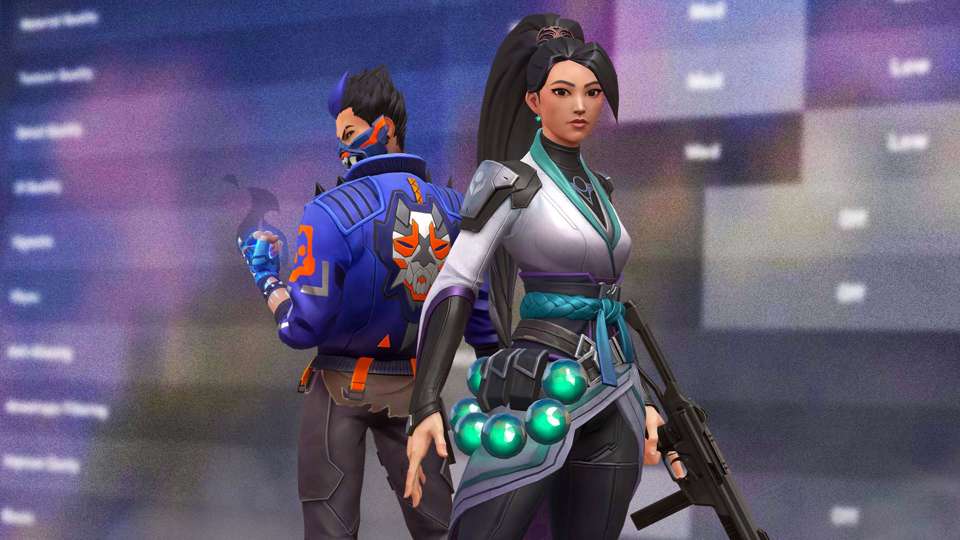How To Increase FPS in Valorant: Best Settings in 2022

Valorant requires you to make split-second decisions every round, whether it is defusing the Spike in time, sneaking behind an opponent, or getting off an ability – every second counts!
If you’ve been struggling in your matches lately, it might be a good idea to check if your settings are where they should be. We’re giving you our best tips and settings for increasing your FPS in Valorant.

Source: Riot Games
The easiest, and usually most effective, method of increasing your FPS in any game will be to change your in-game settings. If you’re playing on the highest settings, naturally performance is going to suffer, depending on your hardware.
Increasing your framerate in Valorant begins with adjusting your Valorant settings to fit with what your PC can handle.
Best Valorant in-game settings
There are two areas to focus on: in-game settings and the overall performance of your PC. Your in-game settings are the most basic. You may tweak them to boost Valorant's performance and increase your frames per second.
You should also optimize the way your computer runs the game; there are a few essential things you can do outside of the game to increase your FPS, but we'll get to that later.
Make sure your in-game settings are:
- Limit FPS: Off
- Max FPS Always: On
- NVIDIA Reflex Low Latency: On
- Multithreaded Rendering: On
- Material Quality: Low
- Texture Quality: Low
- Detail Quality: Low
- UI Quality: Low
- Vignette: Off
- V-Sync: Off
- Anti-Aliasing: None
- Anisotropic Filtering: 1x
- Improve Clarity: On
- Bloom: Off
- Enhanced Gun Skin Visuals: Off
- Distortion: Off
- Shadows: Off
These are generally the best settings for most current PC configurations, giving your hardware more space to focus on increasing FPS instead of visuals.

Source: Riot Games
General settings to boost FPS in Valorant
- On your pc, launch the Valorant Client.
- By selecting Task Manager from the Task Bar, you may open Task Manager.
- Now, in Task Manager, go to Details and look for Valorant on the Details Tab.
- Then right-click Valorant and select Priority > Above Normal from the drop-down menu.
Save your memory to increase FPS
When you turn on your computer, some programs launch automatically and take up RAM usage. While most of them are beneficial, there are a few that you may want to prevent from launching to free up some RAM, such as Spotify, Google Chrome, and any other apps you won't be using while gaming.
You can do this by going to the "Startup" tab and then turning off any Startup Apps that you believe are unnecessary. You may also turn off some programs that run in the background while you're doing other things on your PC, such as playing Valorant.
By looking for 'Background Programs' in the search box and disabling all the superfluous apps, you can save up a lot of memory.
The best graphics card settings for Valorant
Once you’ve optimized your in-game settings, it’s time to have a look at your hardware to see if there’s room for improvement there as well. Depending on your graphics card, you’ll want to make sure that everything is up to date and optimized to give your FPS a boost.
Valorant's FPS may be greatly improved by customizing the graphics settings for your PC. Whether you have an Nvidia or AMD graphics card, there are a few basic graphics settings you may use on your PC.
Nvidia graphics card settings for Valorant
- Open your Nvidia Control Panel by clicking on the arrow in the right-hand corner of your taskbar
- Go to ‘3D Settings’ in your Control Panel and click ‘Manage 3D Settings’
- Click 'Program Settings,' and then pick ‘Valorant’ from the drop-down list
Make sure your Global Settings are:
- Multi-Frame Sampled AA (MFAA): Off
- Multi-display mixed-GPU acceleration: Multiple display performance mode
- Power management mode: Optimal power
- Shader Cache: On
- Texture filtering - Anisotropic sample optimization: Off
- Texture filtering - Negative LOD bias: Clamp
- Texture filtering – Quality: Quality
- Texture filtering - Trilinear optimization: Off
- Threaded optimization: Auto
- Triple buffering: Off
- Vertical sync: Use the 3D application setting
- Virtual Reality pre-rendered frames: 1

Source: Riot Games
AMD graphics card settings for Valorant
- Open your AMD Radeon Software by clicking on the arrow in the right-hand corner of your taskbar
- Click on the gear icon to go to the settings menu and select ‘Graphics’
- Select the ‘Gaming’ profile and make sure your settings are:
- Radeon™ Anti-Lag: Enabled
- Radeon™ Chill: Disabled
- Radeon™ Boost: Disabled
- Radeon™ Image Sharpening: Disabled
- Radeon™ Enhanced Sync: Disabled
- Wait for Vertical Refresh: Off, unless application specified
- Frame rate target control: Disabled
- Anti-Aliasing: Use application settings
- Anti-Aliasing Method: Multisampling
- Anisotropic Filtering: Disabled
- Texture Filtering Quality: Performance
- Surface Format Optimization: Enabled
- Tessellation Mode: AMD optimized
- OpenGL Triple Buffering: Disabled
- 10-Bit Pixel Format: Disabled
Should you disable Game Mode and Xbox Game Bar?
Game Mode and Xbox Game Bar are two programs that are pre-installed on every Windows PC. While the majority of gamers prefer to have the Game Bar deactivated and Game Mode active, while others prefer to have both turned off. The Xbox Game Bar is a form of overlay in the game that may consume some memory, lowering the FPS slightly.
So it's best to disable it by searching for 'Xbox Game Bar' and then turning it off from the app. Game Mode, on the other hand, optimizes the game, however, it may not work for everyone. As a result, we recommend that you check both settings to see if they help you increase FPS while playing Valorant.
After adjusting all the settings mentioned, your game should run more smoothly than before. This will surely give you a better chance against other players and greatly improve your gaming experience.